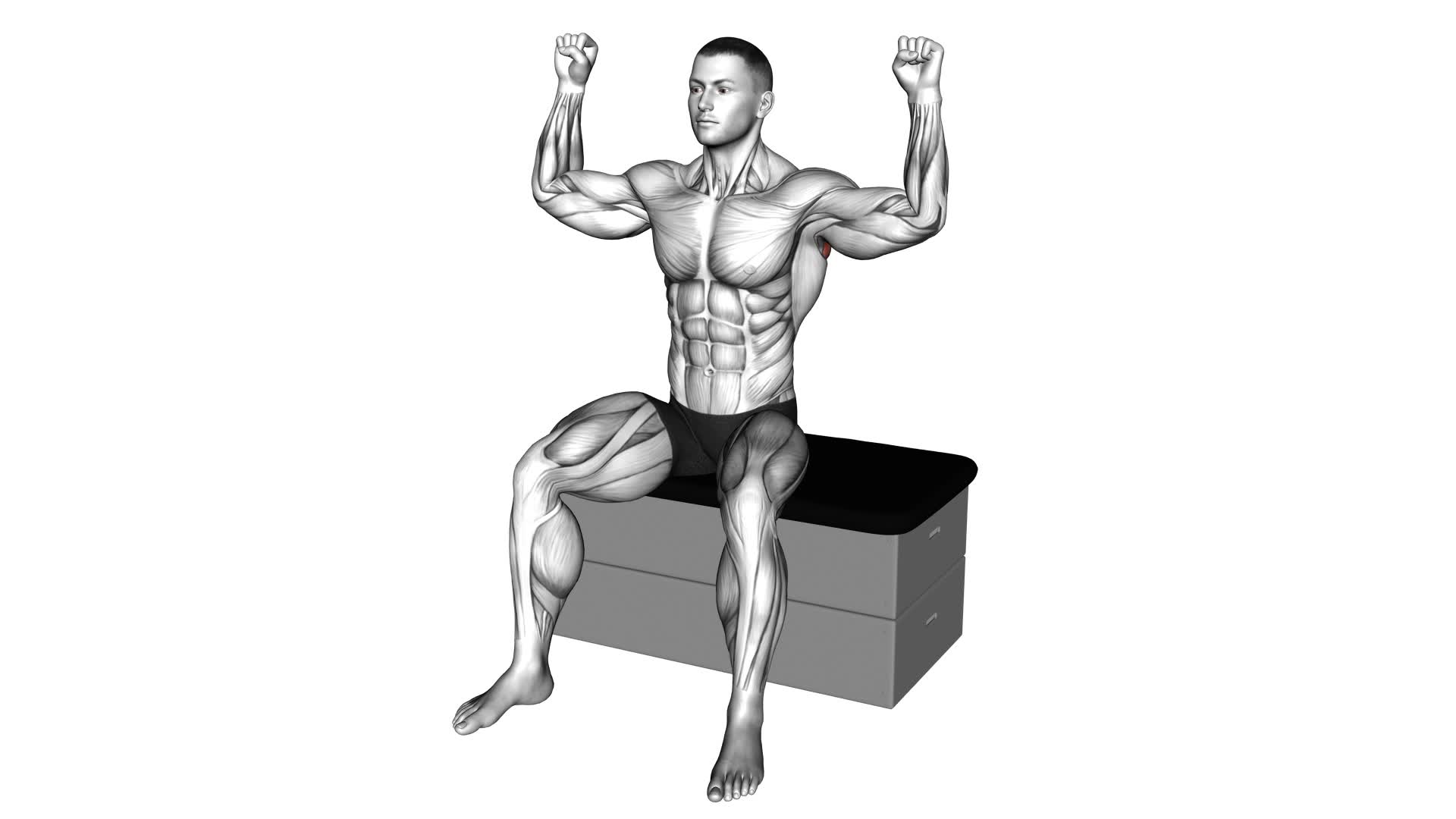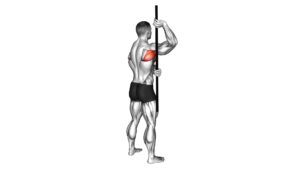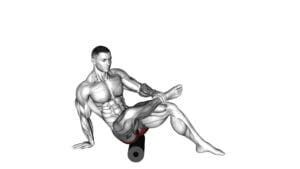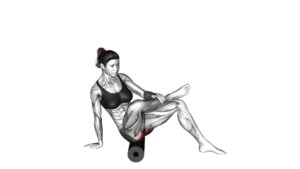Rotator Cuff Warm-up – Video Exercise Guide & Tips

Are you looking for a way to properly warm up your rotator cuff before exercise? Look no further!
Watch This Exercise Video
In this video exercise guide, we'll show you the importance of a rotator cuff warm-up and provide you with a step-by-step routine.
Learn the basic anatomy of the rotator cuff and get valuable tips for executing the warm-up correctly.
Avoid common mistakes and seamlessly incorporate this warm-up into your fitness routine.
Get ready to maximize your workout and prevent injuries!
Key Takeaways
- Rotator cuff warm-up is crucial for injury prevention
- It helps activate and strengthen shoulder muscles
- Rotator cuff warm-up enhances shoulder stability and control
- It improves overall performance and range of motion
Importance of Rotator Cuff Warm-up
To avoid injury and maximize performance during your workouts, it's crucial that you incorporate a proper rotator cuff warm-up routine. The benefits of a rotator cuff warm-up are numerous and can't be overlooked. By engaging in a specific warm-up routine, you can increase blood flow to the muscles surrounding the rotator cuff, which helps to improve flexibility and range of motion. This, in turn, reduces the risk of injury and enhances overall shoulder stability.
Proper form is of utmost importance when performing a rotator cuff warm-up. It's essential to execute each exercise with precision and control. This ensures that the targeted muscles are activated and properly warmed up. Pay close attention to your body positioning and movement patterns, as incorrect form can lead to unnecessary stress on the rotator cuff and surrounding structures.
By incorporating a well-designed rotator cuff warm-up into your workout routine, you can experience improved shoulder function and performance. It prepares your muscles for the demands of your workout, enabling you to lift heavier weights and perform more challenging exercises with reduced risk of injury.
Basic Anatomy of the Rotator Cuff
Understanding the basic anatomy of the rotator cuff is essential for effectively warming up and protecting this crucial shoulder structure. The rotator cuff is a group of four muscles that surround the shoulder joint and work together to provide stability and control during movement. These muscles include the supraspinatus, infraspinatus, teres minor, and subscapularis.
Here are five important aspects of the rotator cuff anatomy to consider when performing rotator cuff exercises and stretches:
- The supraspinatus muscle is located on the top of the shoulder blade and helps to initiate arm abduction.
- The infraspinatus muscle is located on the back of the shoulder blade and aids in external rotation of the arm.
- The teres minor muscle is also located on the back of the shoulder blade and assists in external rotation and stabilization of the shoulder joint.
- The subscapularis muscle is situated on the front of the shoulder blade and is responsible for internal rotation of the arm.
- The tendons of these four muscles form a cuff-like structure that surrounds the head of the humerus, providing stability and promoting smooth movement.
Video Exercise Guide for Rotator Cuff Warm-up
To properly warm up your rotator cuff and prevent injuries, it's crucial to follow the correct technique.
This video exercise guide will provide you with step-by-step instructions on how to perform the warm-up exercises effectively.
Proper Warm-Up Technique
Start with a quick and effective warm-up routine to prepare your rotator cuff muscles for exercise. Proper warm-up technique is essential for preventing injuries and maximizing your performance. Here are some key steps to follow:
- Begin with gentle shoulder rolls to loosen up the muscles.
- Perform dynamic stretches like arm circles and shoulder extensions to increase blood flow and flexibility.
- Incorporate rotator cuff exercises such as internal and external rotations to activate and strengthen the muscles.
- Use resistance bands or light dumbbells to add resistance and challenge the rotator cuff muscles.
- Finish with static stretches, holding each stretch for 20-30 seconds, to improve flexibility and reduce muscle tension.
By following these warm-up techniques, you'll enhance your rotator cuff's readiness for exercise, reduce the risk of injury, and optimize your overall workout performance.
Now, let's move on to the next section, where we'll discuss injury prevention tips.
Injury Prevention Tips
To prevent injuries and ensure a safe and effective rotator cuff warm-up, follow these injury prevention tips. Incorporating injury prevention exercises into your routine can help strengthen the rotator cuff muscles and reduce the risk of injury.
One effective exercise is the external rotation, where you use a resistance band or dumbbell to strengthen the external rotators of the shoulder.
Another exercise is the prone horizontal abduction, where you lie face down and lift your arms out to the sides, targeting the posterior rotator cuff muscles.
Additionally, the standing row exercise can help strengthen the muscles of the upper back, which can provide stability to the shoulder joint.
Remember to start with lighter weights and gradually increase the intensity as your strength improves.
Tips for Properly Executing Rotator Cuff Warm-up
To properly execute the rotator cuff warm-up, begin by using a resistance band. This will help activate and strengthen the muscles surrounding the shoulder joint. Here are some tips to ensure you're performing the warm-up correctly:
- Proper form: Make sure to maintain proper posture throughout the exercise. Keep your back straight and shoulders relaxed. Avoid shrugging your shoulders or hunching forward.
- Duration: Perform the warm-up for about 5-10 minutes. This will give your rotator cuff muscles enough time to warm up and prepare for the upcoming workout.
- Intensity: Start with a light resistance band and gradually increase the intensity as your muscles become stronger. The band should provide enough tension to challenge your muscles, but not to the point of pain or discomfort.
- Controlled movements: Focus on slow and controlled movements during the warm-up. This will help activate the rotator cuff muscles and improve stability in the shoulder joint.
- Full range of motion: Ensure that you're moving through the full range of motion during each exercise. This will help improve flexibility and mobility in the shoulder joint.
Common Mistakes to Avoid During Rotator Cuff Warm-up
To avoid potential pitfalls, it's important to be aware of common mistakes that should be avoided during the rotator cuff warm-up. By understanding these mistakes and taking the necessary precautions, you can effectively prevent injuries and ensure a safe and effective warm-up routine.
One common mistake to avoid is rushing through the warm-up exercises. It's essential to take your time and perform each movement with proper form and control. Rushing can lead to poor technique, increasing the risk of injury. Remember to focus on the quality of each repetition rather than the quantity.
Another mistake to be cautious of is neglecting the small muscles of the rotator cuff. These muscles play a crucial role in stabilizing the shoulder joint and preventing injuries. Often overlooked, they need specific attention during warm-up exercises. Make sure to include exercises that target the rotator cuff muscles, such as external and internal rotations, to adequately prepare them for the upcoming workout.
Lastly, failing to listen to your body is a significant mistake. If you experience any pain or discomfort during the warm-up, it's essential to stop and assess the situation. Pushing through pain can exacerbate an existing injury or lead to a new one. Always prioritize your safety and well-being by modifying or avoiding exercises that cause pain.
Incorporating Rotator Cuff Warm-Up Into Your Fitness Routine
Incorporate the rotator cuff warm-up into your fitness routine to enhance shoulder stability and prevent injuries. Including these exercises in your warm-up routine offers numerous benefits for your shoulders and overall fitness. Here are five reasons why you should incorporate rotator cuff exercises and the benefits of a shoulder warm-up:
- Injury Prevention: Engaging in rotator cuff warm-up exercises before your workout helps to activate and strengthen the muscles around your shoulder joint, reducing the risk of injury during strenuous activities.
- Improved Shoulder Stability: Rotator cuff exercises target the smaller muscles that stabilize the shoulder joint. By strengthening these muscles, you enhance shoulder stability, allowing for better form and control during exercises.
- Enhanced Performance: A proper warm-up routine can improve your overall performance by increasing blood flow to the shoulder muscles, improving range of motion, and optimizing muscle activation.
- Reduced Muscle Imbalances: Regularly incorporating rotator cuff exercises into your fitness routine helps prevent muscle imbalances, which can lead to poor posture, limited mobility, and increased risk of injury.
- Long-Term Shoulder Health: Consistently performing rotator cuff exercises can help maintain the health and function of your shoulders, reducing the likelihood of developing chronic shoulder issues later in life.
Frequently Asked Questions
How Long Should I Spend on a Rotator Cuff Warm-Up Before Starting My Workout?
Before starting your workout, it's important to spend an adequate amount of time on a rotator cuff warm-up. This will help prepare your shoulder muscles for the upcoming exercises and reduce the risk of injury.
The rotator cuff warm-up benefits include increased blood flow, improved range of motion, and enhanced muscle activation.
Various techniques can be used for a rotator cuff warm-up, such as internal and external rotations, scapular retractions, and shoulder stretches.
Is It Necessary to Warm up the Rotator Cuff Before Every Upper Body Workout?
Before every upper body workout, warming up the rotator cuff isn't necessary. However, it's highly recommended due to its numerous benefits.
A proper warm-up helps increase blood flow to the muscles, improves joint mobility, and reduces the risk of injury.
If you choose not to warm up your rotator cuff, there are alternative exercises and stretches that can be done to prepare your shoulder muscles for the workout.
Can I Use Resistance Bands Instead of Dumbbells for the Rotator Cuff Warm-Up Exercises?
Yes, you can definitely use resistance bands instead of dumbbells for your rotator cuff warm-up exercises.
Using resistance bands offers several benefits for your rotator cuff warm-up routine. They provide constant tension throughout the entire range of motion, helping to strengthen and stabilize your rotator cuff muscles.
Resistance bands also allow for a greater variety of exercises and can be easily adjusted to accommodate different levels of resistance.
Incorporating resistance bands into your warm-up will effectively prepare your rotator cuff for your upper body workout.
Should I Perform the Rotator Cuff Warm-Up Exercises Before or After My Cardio Workout?
Performing the rotator cuff warm-up exercises before your cardio workout is highly recommended. This is because warming up your rotator cuff muscles before engaging in cardiovascular activities can help prevent injury and improve overall performance.
The rotator cuff warm-up benefits include increased blood flow to the muscles, improved range of motion, and reduced risk of strains or tears. It's important to prioritize the warm-up to ensure your shoulder joints are properly prepared for the demands of your cardio workout.
Can I Still Do My Regular Shoulder Exercises After Completing the Rotator Cuff Warm-Up?
Yes, you can still do your regular shoulder exercises after completing the rotator cuff warm-up. The purpose of the warm-up is to prepare your rotator cuff muscles for the upcoming workout, increasing blood flow and flexibility.
Once you've warmed up your rotator cuff, it's important to continue working on your shoulder strength to prevent injuries. However, make sure to listen to your body and stop if you experience any pain or discomfort during the exercises.
Conclusion
In conclusion, incorporating a proper rotator cuff warm-up into your fitness routine is crucial for preventing injuries and optimizing performance.
By understanding the basic anatomy of the rotator cuff and following the video exercise guide provided, you can ensure that you're properly executing the warm-up exercises.
Additionally, it's important to avoid common mistakes and maintain proper form throughout the warm-up.
Remember, taking the time to warm up your rotator cuff can significantly improve your overall fitness experience.

Author
Years ago, the spark of my life’s passion ignited in my mind the moment I stepped into the local gym for the first time. The inaugural bead of perspiration, the initial endeavor, the very first surge of endorphins, and a sense of pride that washed over me post-workout marked the beginning of my deep-seated interest in strength sports, fitness, and sports nutrition. This very curiosity blossomed rapidly into a profound fascination, propelling me to earn a Master’s degree in Physical Education from the Academy of Physical Education in Krakow, followed by a Sports Manager diploma from the Jagiellonian University. My journey of growth led me to gain more specialized qualifications, such as being a certified personal trainer with a focus on sports dietetics, a lifeguard, and an instructor for wellness and corrective gymnastics. Theoretical knowledge paired seamlessly with practical experience, reinforcing my belief that the transformation of individuals under my guidance was also a reflection of my personal growth. This belief holds true even today. Each day, I strive to push the boundaries and explore new realms. These realms gently elevate me to greater heights. The unique combination of passion for my field and the continuous quest for growth fuels my drive to break new ground.







